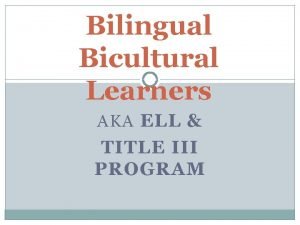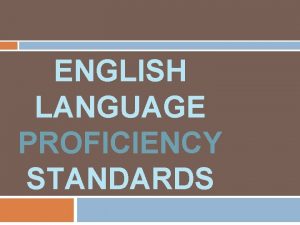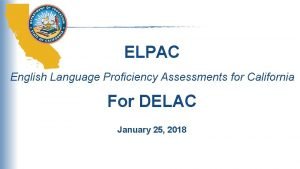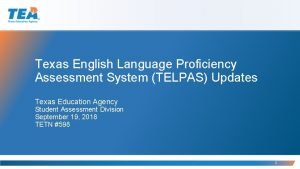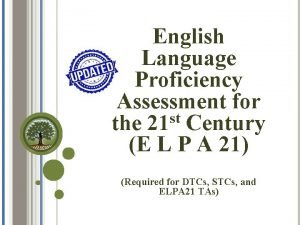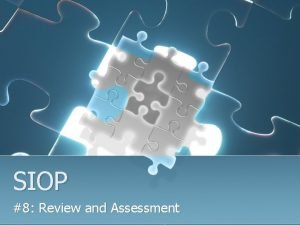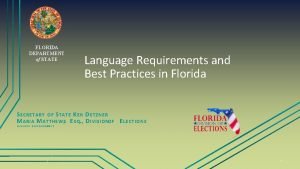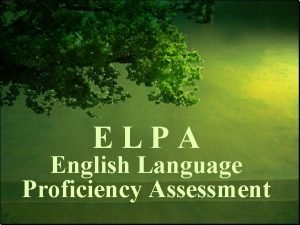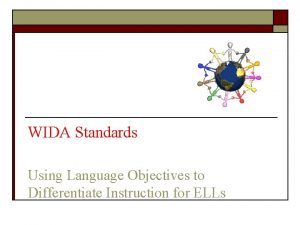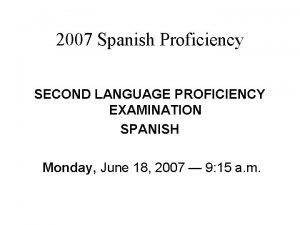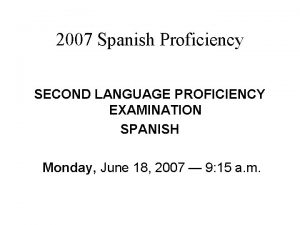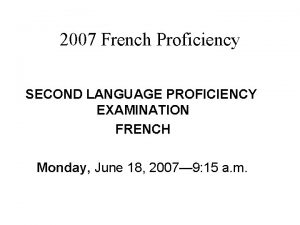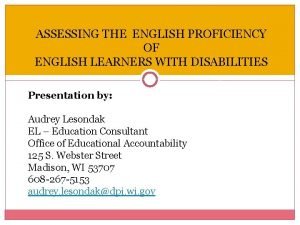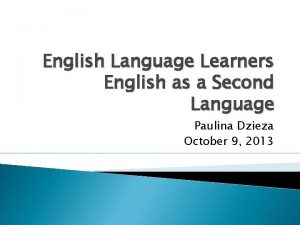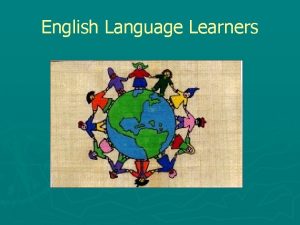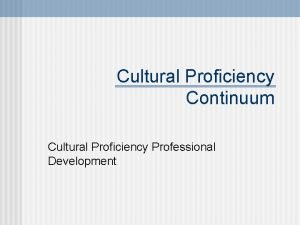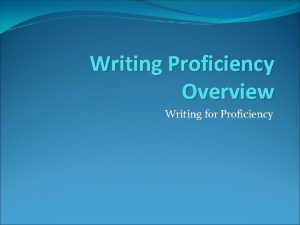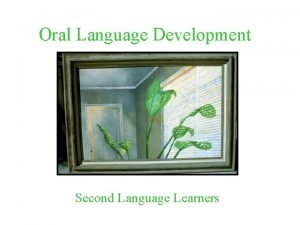Working with English Learners Various English language proficiency
















- Slides: 16

Working with English Learners


Various English language proficiency levels English learners are assessed in 4 domains: listening, speaking, reading and writing (for further information see http: //www. cde. ca. gov/ta/tg/el/ ). Once the assessment is done, they are categorized as: • • • Beginning Early Intermediate Early Advanced (See for detail information http: //www. fuhsd. org/CELDTEnglish. pdf http: //www. sandi. net/depts/literacy/eldpi. pdf ) Keep in mind that the overall proficiency level is the composite of the levels from the 4 domains listed above so an Intermediate English learner may be at the early advanced level in listening and speaking but at the early intermediate or even beginning level in reading and writing.

Variety of cultural backgrounds Since …. • English learners are from one or more cultures and backgrounds. • Many English learners were born in the US yet they are living with parents who are first or second generation immigrants. Therefore … Many activities, objects, animals… that are common to mainstream culture may very well be unfamiliar to English learners.

Different levels of knowledge in both English and primary language • Language transfers; so does knowledge. • English learners who are literate in their primary language usually do better when learning a new language or concept. • Similarly, English learners who have been in school often perform better in acquiring knowledge. Example: concepts like table or photosynthesis does not need to be relearned.


Explain what is said • Content specific vocabularies – condensation, sublimation… • Academic vocabularies – collect, hypothesize, evaluate… • Idiomatic expressions – back to square one, days are numbered, behind the time… • Colloquial – I got an earful from my mother last night. Make sure she does not cross you.

Provide visual presentation, models, examples… • Use realia, pictures, charts, graphic organizers, videos clips. . . to provide concrete understanding. • Models, examples are very helpful.

Use analogies Providing analogies bridges the concepts being learned to students’ prior knowledge, experience or things that they are familiar with. Example: use peanut butter sandwich or jaw breaker candy to explain the different layers of the earth … (for more examples of science analogies, go to http: //www. scienceanalogies. info/webanalogylinks. html )

Role-play, act-out, pantomime These provide visual representation and attach meaning to abstract concepts or ideas. Example: role-play the sun’s, plant’s, and cow’s function in a simple food chain; act out the relationship of bonds between molecules in stages of matter (molecule dance from Dr. Art)…

Provide abstract/summary Providing abstract or summary helps students see the big pictures, the overview, or the main ideas/concepts of what they are about to explore/learn. Like professional papers that you have read. See abstract

Highlight/underline key concepts, main ideas When reading texts, highlighting/underlining enables English learners to identify key concepts or main ideas. This is also a study skill that not all students acquired.

Paraphrase • Paraphrase presents the same information in a simpler way without the complexity of grammar structures and mechanics and academic or content specific vocabularies. • Remember to use already learned content or academic language when paraphrasing.

Provide processing time • Everyone including English learners need time to process the information as it is how human brain function. • For English learners, since English is not their first language, they need time to “translate” what they hear or receive into their own language, structure a reply or answer if required then translate it back to English to say it out loud. The whole process takes time. • Usually, strategies like 10/2 would work well. Teacher instructs for 10 minutes (more or less depending on grade levels), then provide 2 minutes for students to process the information by sketching or jotting down what they just heard, share with a partner….

Cooperative learning structures/activities • Cooperative group structures and activities provide students the opportunities to process and discuss information in a low effective filter. • Examples: pair share, group project, numbered heads together, … Websites for cooperative learning structures/activities: http: //edtech. kennesaw. edu/intech/cooperativelearning. htm http: //www. jalt. org/pansig/PGL 2/HTML/Nakagawa. htm http: //www. utexas. edu/academic/diia/research/projects/hewlett/ cooperative. php

Keep expectations consistent with students’ proficiency levels • Tasks assigned, expectations, assessment need to be appropriate to students’ proficiency levels. • Example: Beginning students should be asked to label, match, draw pictures or single word answers… Intermediate students can perform all of the above with the expectation that their answer be in simple sentences or even short paragraph.
 Assistive technology for english language learners
Assistive technology for english language learners English language learners
English language learners Reading strategies for english language learners
Reading strategies for english language learners Equal protection for english language learners
Equal protection for english language learners Language proficiency level
Language proficiency level Language
Language English language proficiency assessments for california
English language proficiency assessments for california Telpas writing rubric
Telpas writing rubric English language proficiency assessment (elpa)
English language proficiency assessment (elpa) Review and assessment siop
Review and assessment siop Language english proficiency
Language english proficiency Elps texas standards
Elps texas standards English language proficiency assessment (elpa)
English language proficiency assessment (elpa) Oelpa scoring guide
Oelpa scoring guide Teaching young learners english
Teaching young learners english Wida language objectives
Wida language objectives Lpac student history worksheet
Lpac student history worksheet

